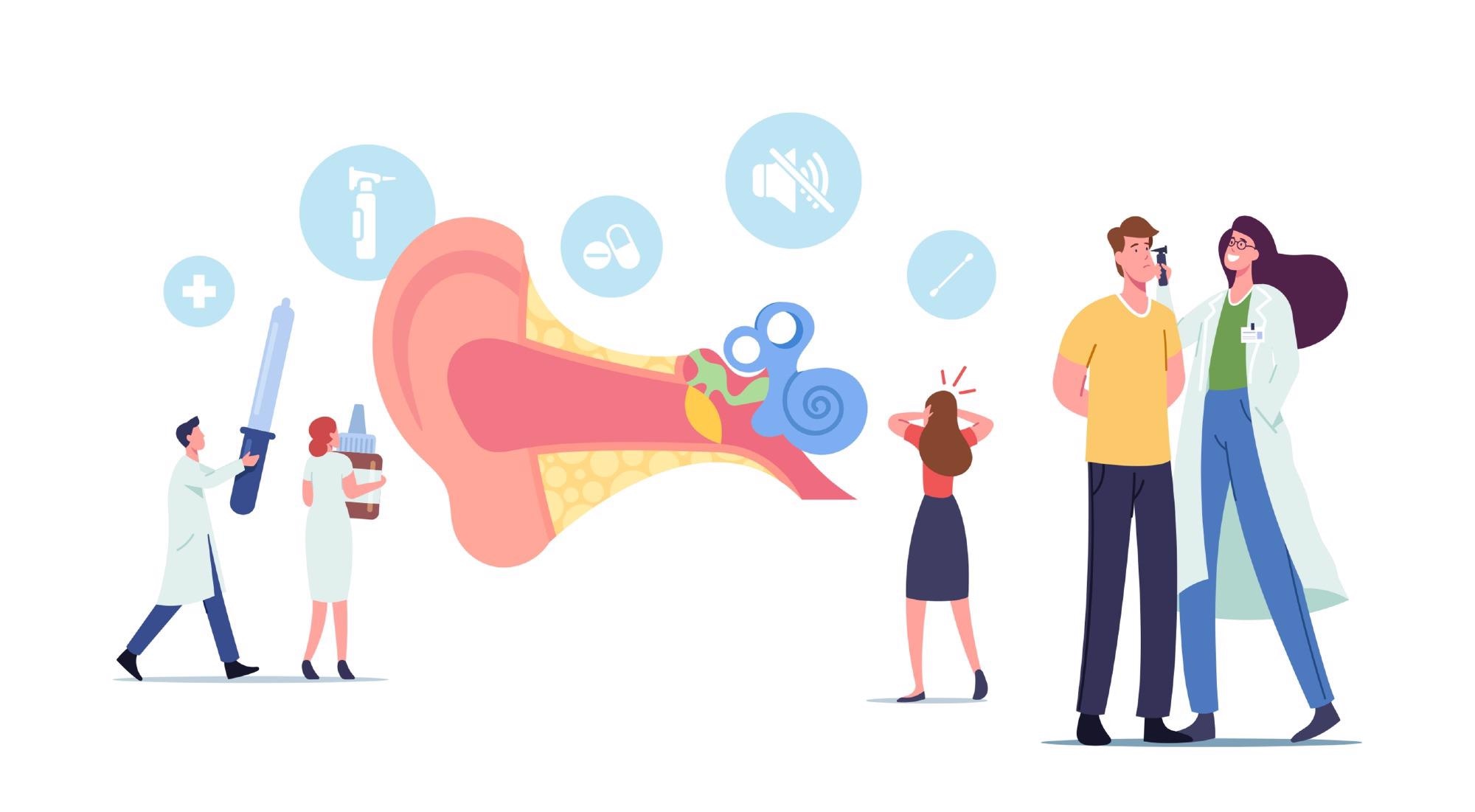Otosclerosis is one of many hearing disorders found only in humans, affecting the otic capsule. It occurs when the joints between the ossicles in the middle ear become hardened with age. The formation of bone around the stapes footplate where it engages in the oval window thus impairing its free movement.

Image Credit: ivector/Shutterstock.com
The anatomy of the ear
The staples (stirrup) is the smallest bone in the human body and the last of the three auditory ossicles, the other two being the malleus (hammer) and incus (anvil). Collectively they comprise the ossicles of the inner ear and play a key role in connecting the sound waves from the external environment and transferring them to the inner ear.
These bones are small; On average, the malleus is ~8.0 mm in height and ~2.7 mm in width. The incus measures ~6.8 mm by height and ~5.3mm in width, and the stapes measures 3.5mm in height and 2.4mm in width.
The malleus connects to the tympanic membrane, also known as the eardrum, transferring auditory oscillations to the incus and then the stapes, i.e. the inner ear. The stapes connect to the oval window. This is also known as the fenestra ovalis and is a connective tissue membrane located at the end of the middle ear and the beginning of the inner ear. It connects the middle ear ossicles to the scala vestibule, which is the upper part of the central organ of the inner ear, also known as the cochlea.
This allows for mechanical energy to be transferred to the fluid-filled inner ear. From there, it travels through the auditory nerve to the brain, which processes the sound.
The clinical significance of otosclerosis
Otosclerosis begins in the bony labyrinth and oval window. The boney labyrinth is located in the ear and consists of a series of bony cavities It is composed of the cochlea, vestibule, and three semi-circular canals.
The vestibule is a central part of the bony labyrinth, which is separated from the middle air by the oval window. The oval window is a membrane-covered opening present in the middle air, directly connected by the stapes. By the time vibrations have reached the oval window they have been amplified over 10 times.
The hardening of the bone results in the loss of flexibility and ultimately compromises the ability of the stapes from being able to transmit sound waves to the oval window. Pathologically, new bone formation and the growth of the vascular associated with it result in the loss of hearing.
Otosclerosis can be asymptomatic or present as a neurosensory loss. It commonly presents as hearing loss and, less commonly tinnitus and. To evaluate patients for otosclerosis, the Rinne and Weber tests, as well as computed tomography (CT) imaging and audiometry, are used.
The Rinne and Weber Test is also commonly known as the tuning fork test and provides a reliable clinical indicator of hearing loss. Patients are asked to describe whether the hearing is louder in one area compared to another.
Patients may also experience balance problems, dizziness, or tinnitus. Tinnitus describes a ringing or buzzing sound in the ears that sometimes occurs with hearing loss.
The causes of otosclerosis
The cause of Otosclerosis is still unclear, however, several causes (etiologies) have been proposed:
- Anatomical: This may be due to the persistence of embryonic cartilage commonly affecting a part of the end known as the fistula ante fenestrae which is located close to the oval window.
- Genetic: Several loci on chromosomes 1, 6, 7, 9, 15, and 16 have been identified. Moreover, several genes have been implicated in otosclerosis and include type I collagen, transforming growth factor-beta I, angiotensin II, sex hormones, human leukocyte antigen, inflammatory and regulatory cytokines, parathyroid hormones, and expression of parathyroid hormone-related peptide receptors, as well as oxidative stress genes.
- Hereditary: There is a positive family history in more than half of patients that present with otosclerosis. The genetics of the condition show an autosomal dominant mode of inheritance. Autosomal dominance is a pattern of inheritance in which the gene in question is located on one of the non-sex chromosomes; dominant refers to the sufficiency of a single copy of the gene to cause the condition.
- Ethnicity, sex, and age: Otosclerosis is more common in Caucasians is more prevalent in women, which suggests the role of the sex hormone in its genetic etiology, and is more commonly seen in people between the ages of 20 and 40.
- Viral infections: Measles is thought to initiate a pathological process, which is exacerbated by autoimmunity and a genetic predisposition. However, the evidence to suggest the link between the two requires further probing.
Treating otosclerosis
More than 90% of patients experience restoration of hearing ability following surgery. It is important to note that there is no medical therapy that is curative. As such, surgical treatment, also known as stapedotomy, is used.
In this type of surgery, a small hole is drilled or lasered in the stapes footplate (base) to enable the placement of a prosthesis. Following this, a plastic or metal prosthesis is then put into the ear to conduct sound from the remaining ossicles into the inner ear.
This form of surgery may not produce any noticeable benefits in rare cases; in addition, there is a probability of recurring conductive hearing loss as a result of prosthetic displacement. However, revision surgery can be performed, albeit with lower success rates compared to initial surgery.
Otosclerosis is a progressive disease on gradually worsens overtime combat leading to complete hearing loss. The overall outcomes for patients can be improved by coordinated cat between otolaryngologists, occupational therapists, and psychotherapists.
References:
Further Reading
Last Updated: Jan 7, 2022